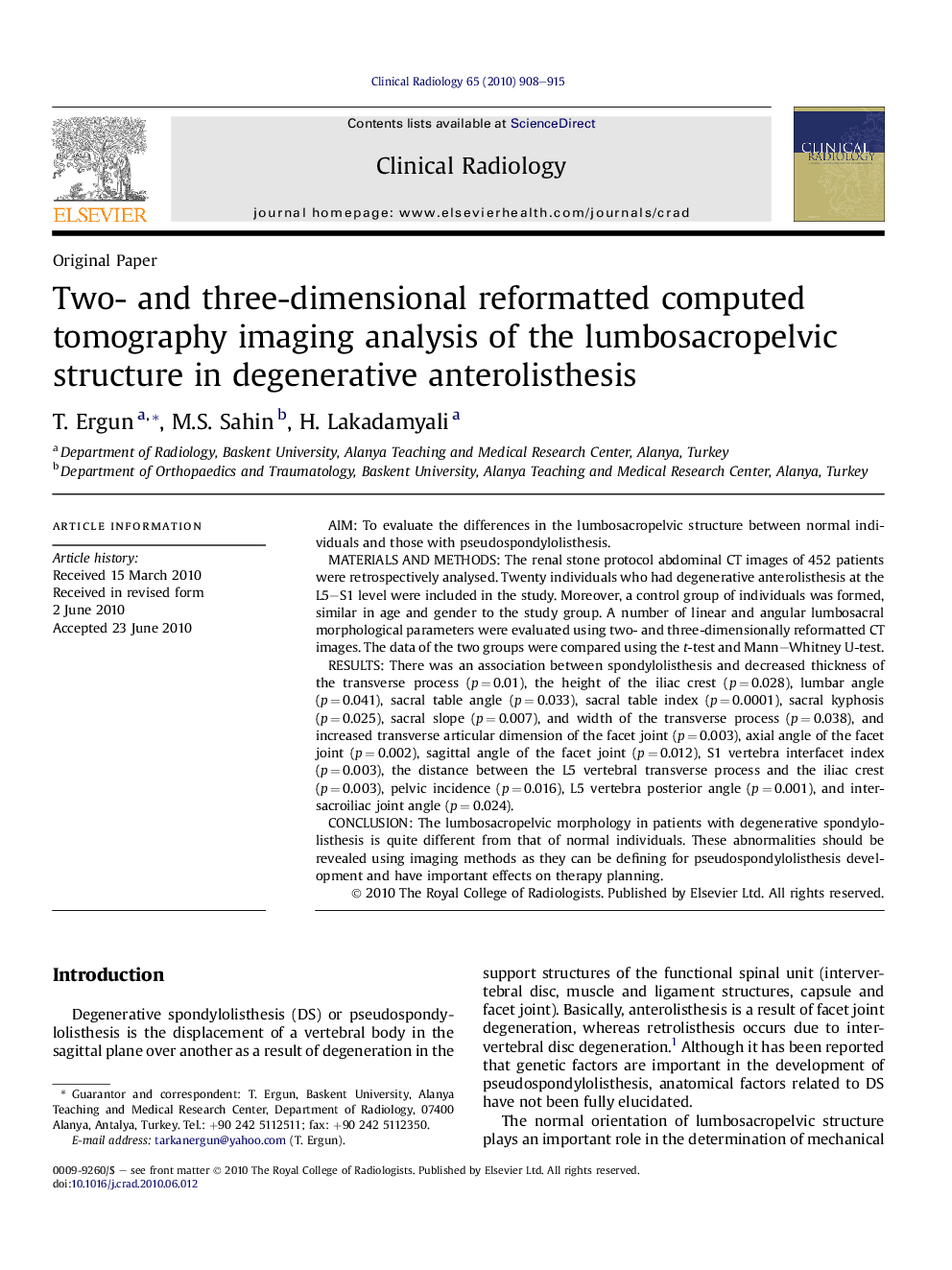| Article ID | Journal | Published Year | Pages | File Type |
|---|---|---|---|---|
| 3982971 | Clinical Radiology | 2010 | 8 Pages |
AimTo evaluate the differences in the lumbosacropelvic structure between normal individuals and those with pseudospondylolisthesis.Materials and methodsThe renal stone protocol abdominal CT images of 452 patients were retrospectively analysed. Twenty individuals who had degenerative anterolisthesis at the L5–S1 level were included in the study. Moreover, a control group of individuals was formed, similar in age and gender to the study group. A number of linear and angular lumbosacral morphological parameters were evaluated using two- and three-dimensionally reformatted CT images. The data of the two groups were compared using the t-test and Mann–Whitney U-test.ResultsThere was an association between spondylolisthesis and decreased thickness of the transverse process (p = 0.01), the height of the iliac crest (p = 0.028), lumbar angle (p = 0.041), sacral table angle (p = 0.033), sacral table index (p = 0.0001), sacral kyphosis (p = 0.025), sacral slope (p = 0.007), and width of the transverse process (p = 0.038), and increased transverse articular dimension of the facet joint (p = 0.003), axial angle of the facet joint (p = 0.002), sagittal angle of the facet joint (p = 0.012), S1 vertebra interfacet index (p = 0.003), the distance between the L5 vertebral transverse process and the iliac crest (p = 0.003), pelvic incidence (p = 0.016), L5 vertebra posterior angle (p = 0.001), and intersacroiliac joint angle (p = 0.024).ConclusionThe lumbosacropelvic morphology in patients with degenerative spondylolisthesis is quite different from that of normal individuals. These abnormalities should be revealed using imaging methods as they can be defining for pseudospondylolisthesis development and have important effects on therapy planning.
